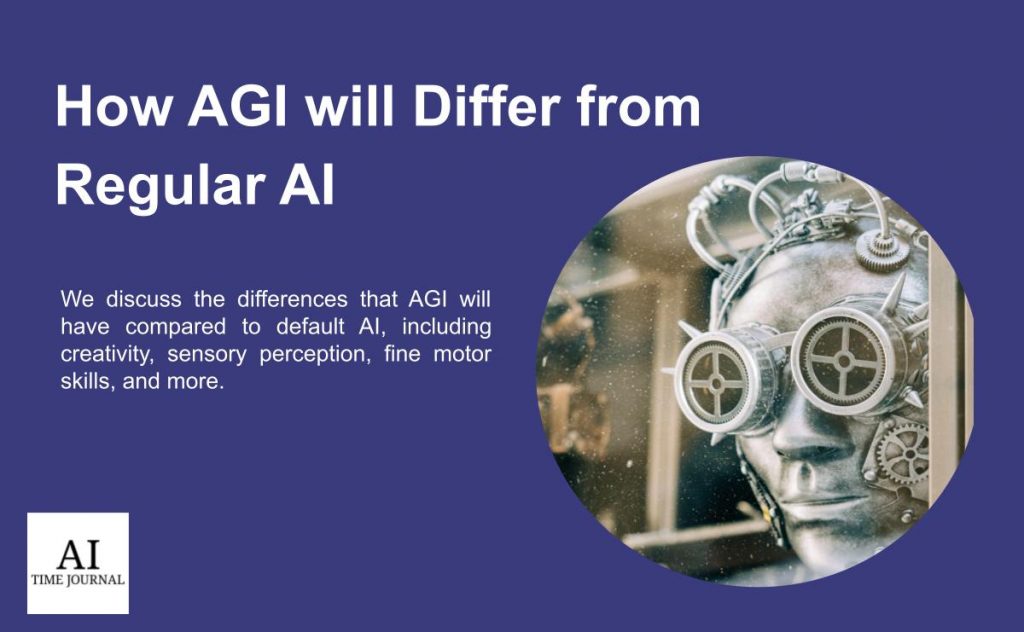
AI has gone through so much change in its short lifespan. Since its inception, AI has progressed faster than most technologies. One of the biggest changes that will come from AI is AGI (Artificial General Intelligence) which is when the intelligent agent can resolve an intellectual task as well as a human could.
When dealing with AGI, a large majority of careers and roles can be enhanced through this new tech, but some key areas will lead to the future of the industry. Through some research, we have found ways that AGI will improve upon the AI foundation.
Creativity
One main thing that hurts AI is its inability to interpret abstract concepts. One way that AGI will fix this is the ability to decipher more intricate factors that the AI couldn’t. The ability of AI to more thoroughly understand its tasks helps it to extract more details from data.
For example, AI can make decisions on what to say. The issue is that AI does not understand the intricacies of language and cultural relatability. Rather, AI will take a straightforward approach with no extra details. This is where AGI differs. AGI works towards choosing more creative options and solutions when going through data sets that could lead to more accurate classifications and AI-driven solutions to novel problems.
Sensory Perception
One thing that AI excels at is identifying objects within pictures. Often, we use this technology to make sure everything within a picture is accounted for. One way AI is used to help is in wildlife conservation by identifying animals. However, it is unable to differentiate between aspects like depth or other more complex visual identifiers.
Through the use of AGI, the AI would be able to pick up 3-D indicators within images. This will allow the AI to decipher more details from images. It will also be able to look into more subjective concepts within the picture. This is done through past experiences that the AI is familiar with which it uses to predict information in subsequent photos.
Fine Motor Skills
If AI is starting to outperform humanity in terms of visualization and creativity, surely we could outperform it in dexterity, but sadly this is not true. Primarily used in robotics, the use of fine motor skills has become a handy ability for maneuvering everyday objects. Robots have had very limited use for motor skills as they only need to move one thing from point A to point B, then move back to A, then repeat. But AGI has made this more complex.
To more closely replicate human skills, extra motor skills are required to more optimally perform tasks. This will allow robots to perform unwanted or dangerous jobs such as bomb defusing. Going forward from this, Robots and humanity would be able to accomplish double the work for half the manpower and labor, thus making the overall productivity far beyond what it otherwise could be.
Natural Language Understanding (NLU)
The various usages of AGI will give AI the ability to understand. One part that needs some very precise understanding is language. The reason for this being difficult is the nuance that comes from phrases, especially today with the immense amounts of irony that is prevalent in society.
Through the use of previous messages and interactions, the ability of AI to recognize words and sentences that match what is being said is paramount. Every interaction that is being used with the AI is then implemented into a database of responses to clean up the dialogue and make it more natural. This is useful with chatbots, and the future could see them become indistinguishable from human customer service representatives.
Navigation
Lastly, the need for navigation is quite important, especially for those who might be from outside the area. More times than not, people will use apps such as Google Maps, Apple Maps, or a third-party app like Waze. We often encounter routes that go ways we would prefer not to go down, and through AGI, this issue can be nullified.
AGI will have the ability to remember nuanced and personalized details, which is very beneficial for traveling as the AI can compile the data from each trip. Using this data allows the AI to give the best directions possible. But becomes even better through the ability to customize it on the fly. Through multiple trips throughout the day, the AI might be able to help make sure that each person gets the fastest available trip.
On top of all this, the AI could use outside information to get these routes. Whether that be seasonal outsiders blocking roads or weather-affecting routes, the AI can use past data as a reference for what could happen in the future.
